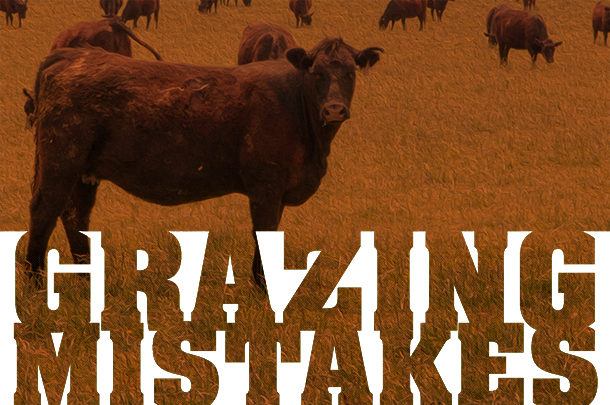According to Mary Drewnoski, a beef systems specialist with the University of Nebraska, there are five common grazing mistakes that stand out. She explained each and their role in the profitability of operations at the Driftless Beef Conference in Dubuque, Iowa, in January.
1. Not understanding the plant’s needs
Grazing heights and rest periods are frequently discussed and important when it comes to management, but why?
Drewnoski explained that plants have to reserve some of their energy for regrowth. The challenge, however, is not all plants store their energy in the same place. For example, orchardgrass is one that puts its energy reserves in the stem base, while alfalfa and other legumes store energy in the taproots. She said that knowledge completely alters the begin-and-end grazing heights.
“We’ve got to think about what we do in the fall and how that sets us up for the spring growth,” Drewnoski said. “The same thing goes for the spring. We know we go into a bit of dormancy in the summer sometimes, so we need to think about how we are setting ourselves up toward the end of that vigorous growth to where we can take advantage of the conditions when they get good again.”
2. Not being flexible
Drewnoski cautioned producers about succumbing to “impatient cow syndrome,” or in other words, moving the cows to a new paddock too early.
“How many of you have kids or grandkids?” Drewnoski asked the audience. “Do you give them candy every time they want candy? No, they have to eat their vegetables, right? If you end up moving the cows when they want, they definitely won’t eat what was left over when they return to that pasture because it will be too mature.”
The key is having small enough paddocks where you can force them to eat those so-called “vegetables,” she said.
3. Not investing in the pasture
According to Drewnoski, soil sampling is a practice that can’t be overlooked. She explained that while cattle might not take nutrients off the pasture per se, they do spread them around, and it’s not always in the most desirable places.
“How many of you have an alley in your rotational grazing system? How many of you have access to that alley all of the time because that’s where the waterer is?” she asked the audience. “Your alley doesn’t grow a whole lot of forage, but it does have a lot of nutrients because they go through and put it there. So they are taking the nutrients from the paddock and putting it in the alleyway. The same goes for around trees and other loafing areas, so we need to think about soil sampling.”
She recommended producers sample their pasture every three years, or to make it a little more manageable, sample one-third of the pasture every year. Producers should pay close attention to the soil pH, because if the soil is acidic, the grass and especially the legumes won’t yield nearly as well.
4. Not making use of technology
Similar to purchasing a bull, Drewnoski said seed selection is a long-term investment where only the best varieties should be used.
‘This is not the place to cheap out,” she said. “In particular, make sure you have low-weed seed, high germination and improved variety. I really like certified seed because that means they are third-party verified. Unfortunately, a lot of companies have stopped doing that because it is an added cost, but you want to make sure you at least get those three things on that tag.”
In addition, Drewnoski encouraged producers to continue to experiment and tweak the way they currently do things. Tools such as electric fencing, temporary pipe and tumbleweed wheels are all ways to test potential changes in pasture design and improve forage utilization.
5. Not taking advantage of opportunities
Wrapping up her presentation, Drewnoski encouraged attendees to take these concepts, as well as others learned at the conference, and put them into practice.
“If you learn all of this but never apply it, it’s not going to make a difference,” she said. “So go home and put ideas you learned into action.” ![]()

-
Cassidy Woolsey
- Editor
- Progressive Forage
- Email Cassidy Woolsey
PHOTO: Illustration by Kristen Phillips.










